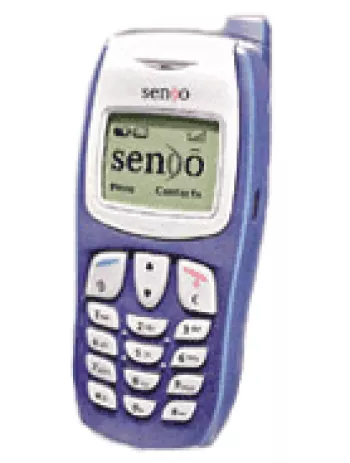
Introduction to Sendo X
The Sendo X, announced in the last quarter of 2003, represents a notable entry in the world of early smartphones. This device, designed by the now-defunct British company Sendo, was a significant part of the transition from feature phones to full-fledged smartphones. Although it has been discontinued, the Sendo X's features and specifications provide valuable insights into the evolution of mobile phone technology in the early 2000s.
Design and Build
The physical design of the Sendo X was typical of early 2000s mobile devices. It had dimensions of 110 x 49 x 23 mm, making it relatively compact for its time, with a weight of approximately 120 grams. This form factor balanced portability with usability, allowing users to operate it easily with one hand. The device used a Mini-SIM and featured a removable Li-Po 1050 mAh battery, which was standard for devices of that era.
Display
The Sendo X sported a 2.2-inch TFT display with a resolution of 176 x 220 pixels. While these specifications may seem modest by today's standards, the 65K color display was impressive at the time, providing vibrant visuals and a 128 ppi pixel density. This ensured that images and text were adequately sharp, catering well to the user interface of the Symbian operating system it utilized.
Operating System and User Interface
The operating system powering the Sendo X was Symbian 6.1 with the Series 60 v1.0 UI. Symbian was the leading OS for smartphones in the early 2000s, known for its robust performance and multitasking capabilities. The Series 60 interface was intuitive for the time, offering users a range of functionalities such as web browsing, media playback, and basic productivity applications.
Performance and Hardware
At the heart of the Sendo X was a TI OMAP 5910 chipset featuring a 120 MHz ARM925T CPU. Although this processing power is minimal compared to modern standards, it was suitable for running the applications and services available on the Symbian platform. The device came with 32MB of internal storage, expandable via MMC/SD card slots, providing adequate space for storing photos, contacts, and other data. Although the RAM size isn’t specified, it was generally limited by today’s measurements, yet sufficient for efficient processing in its time.
Camera Capabilities
The imaging capabilities of the Sendo X included a single VGA camera with LED flash. Although its 0.3-megapixel resolution doesn't match today's high-definition standards, it was quite functional for basic photography needs. The LED flash aided in low-light conditions, and the camera also supported video capture, which was a considerable feature at that time.
Network and Connectivity
Being a GSM phone, the Sendo X supported multiple 2G bands (GSM 900 / 1800 / 1900), making it operable across various regions. For data connectivity, it featured GPRS Class 8, which allowed for better internet access compared to earlier standards. However, it did not support EDGE for faster data speeds. For local connectivity, Bluetooth 1.1 and an infrared port were included, enabling users to connect and transfer files between devices. Despite the absence of WLAN and modern positioning systems like GPS, the connectivity options were typically sufficient for its era.
Audio and Multimedia
In terms of audio, the Sendo X supported polyphonic ringtones and vibratory alerts. While it lacked a loudspeaker and a 3.5mm headphone jack, this limitation was not uncommon for mobile devices of that generation. Users primarily relied on its downloadable ringtones for customization. Additionally, the device offered a rudimentary WAP 2.0/xHTML and HTML browser with SSL support, providing basic web connectivity and browsing capabilities.
Battery Life
The 1050 mAh battery of the Sendo X supported up to 170 hours of standby time and up to 7 hours of talk time. This was fairly competitive, offering reliable performance through a day of average use. The removable battery design also allowed users to carry spare batteries, ensuring uninterrupted usage during extended periods away from charging facilities.
Conclusion
The Sendo X, with its combination of compact design, functional display, and reasonable performance capabilities, was a strong contender in the early 2000s smartphone market. While its features may seem limited compared to modern smartphones, it played a crucial role in setting the foundation for more advanced devices. The Sendo X's contributions to mobile technology remind us of the rapid pace of innovation and the significant leaps made over the past two decades.
Key Features of Sendo X
- GSM Technology supporting 2G bands GSM 900/1800/1900
- Compact dimensions: 110 x 49 x 23 mm and lightweight design at 120 g
- TFT display with 65K colors and screen size of 2.2 inches
- Running on Symbian 6.1 OS with Series 60 v1.0 UI
- Powered by TI OMAP 5910 chipset and 120 MHz ARM925T CPU
- Expandable memory with support for MMC/SD cards
- VGA main camera with LED flash
- Bluetooth 1.1 and Infrared port for connectivity
- Removable Li-Po 1050 mAh battery with up to 170 hours of standby time
- Support for WAP 2.0/xHTML, HTML with SSL for browsing
Disadvantages of Sendo X
- Outdated technology with GSM network support only and no EDGE.
- Discontinued status, making it difficult to find new units or support.
- Bulky design with dimensions of 110 x 49 x 23 mm and weight of 120 g.
- Low display quality with only 65K colors and a low resolution of 176 x 220 pixels.
- Limited processing power with a 120 MHz CPU.
- Minimal internal memory of 32MB, requiring reliance on external MMC/SD cards.
- Basic VGA main camera with limited features.
- No front-facing selfie camera.
- Lack of a loudspeaker and 3.5mm audio jack.
- No WLAN and no GPS features available.
- Lacks a built-in radio functionality.
- Uses a proprietary USB connector, reducing compatibility with standard accessories.

View Also
More Phones
All Rights Reserved +13974 Phones © Mobilawy 2025
























